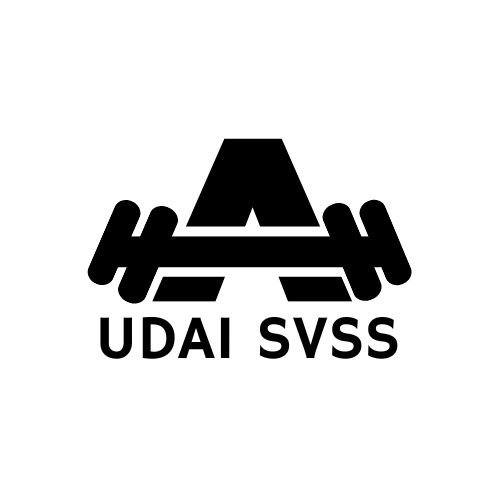Strength training is an essential part of a balanced fitness routine. It helps build muscle, increase strength, and improve overall health. If you’re new to strength training, it can feel overwhelming. However, starting with simple exercises can help you gain confidence and strength over time. In this article, we will explore the top 10 strength training exercises that are perfect for beginners.
Why Strength Training is Important
Before we dive into the exercises, let’s talk about why strength training is beneficial. Here are a few reasons:
- Builds Muscle Mass: Strength training helps you develop muscle, which can improve your metabolism and help you burn more calories, even at rest.
- Improves Bone Density: Lifting weights strengthens your bones, reducing the risk of osteoporosis as you age.
- Enhances Joint Health: Stronger muscles support your joints, helping prevent injuries and improve overall stability.
- Boosts Mental Health: Exercise releases endorphins, which can reduce stress and improve your mood.
- Improves Functional Fitness: Strength training makes everyday activities easier, such as lifting groceries or climbing stairs.
Now that we understand the importance of strength training, let’s look at the top 10 exercises you can start with.
1. Bodyweight Squats
How to Do It:
- Stand with your feet shoulder-width apart.
- Lower your body by bending your knees, keeping your chest up and back straight.
- Go as low as you can while maintaining good form (ideally until your thighs are parallel to the ground).
- Push through your heels to return to the starting position.
Benefits:
Squats work your legs, glutes, and core, making them an excellent full-body exercise.
2. Push-Ups
How to Do It:
- Start in a plank position with your hands slightly wider than shoulder-width.
- Lower your body towards the floor by bending your elbows, keeping your body in a straight line.
- Push back up to the starting position.
Benefits:
Push-ups target your chest, shoulders, triceps, and core, building upper body strength.
3. Dumbbell Rows
How to Do It:
- Hold a dumbbell in one hand and place the other hand on a bench or sturdy surface for support.
- Keep your back flat and pull the dumbbell towards your hip, squeezing your shoulder blade.
- Lower the dumbbell back to the starting position.
Benefits:
Dumbbell rows strengthen your upper back and arms, improving posture and stability.
4. Plank
How to Do It:
- Start in a push-up position but rest on your forearms instead of your hands.
- Keep your body in a straight line from head to heels, engaging your core.
- Hold this position for as long as you can.
Benefits:
Planks strengthen your core, shoulders, and back, enhancing overall stability.
5. Lunges
How to Do It:
- Stand with your feet together.
- Step forward with one leg, lowering your hips until both knees are at 90-degree angles.
- Push back to the starting position and switch legs.
Benefits:
Lunges work your legs and glutes while also improving balance and coordination.
6. Glute Bridges
How to Do It:
- Lie on your back with your knees bent and feet flat on the floor.
- Lift your hips towards the ceiling, squeezing your glutes at the top.
- Lower back down without touching the ground.
Benefits:
Glute bridges target your glutes and lower back, promoting hip stability.
7. Dumbbell Shoulder Press
How to Do It:
- Stand or sit with a dumbbell in each hand at shoulder height.
- Press the dumbbells overhead until your arms are fully extended.
- Lower the weights back to shoulder height.
Benefits:
This exercise strengthens your shoulders and arms, enhancing upper body strength.
8. Deadlifts
How to Do It:
- Stand with your feet shoulder-width apart, holding a dumbbell in each hand in front of your thighs.
- Bend at the hips and knees, lowering the dumbbells towards the floor while keeping your back straight.
- Return to the starting position by pushing through your heels.
Benefits:
Deadlifts work your legs, glutes, and back, making them a powerful full-body exercise.
9. Bicycle Crunches
How to Do It:
- Lie on your back with your knees bent and hands behind your head.
- Lift your shoulders off the ground and bring one knee towards your chest while straightening the other leg.
- Switch legs while twisting your torso to bring your elbow towards the bent knee.
Benefits:
Bicycle crunches strengthen your core, promoting better balance and stability.
10. Mountain Climbers
How to Do It:
- Start in a plank position.
- Bring one knee towards your chest and then quickly switch legs, as if you are “climbing.”
- Keep your core tight and your hips level.
Benefits:
Mountain climbers are a great cardiovascular exercise that also works your core, arms, and legs.
Tips for Getting Started
- Warm-Up: Always start with a warm-up to prepare your muscles and reduce the risk of injury. Consider light cardio or dynamic stretches.
- Start Slow: If you’re new to strength training, begin with lighter weights or bodyweight exercises. Focus on form rather than lifting heavy.
- Rest and Recover: Allow your muscles time to recover by taking rest days between workouts. This is crucial for growth and preventing injury.
- Stay Hydrated: Drink plenty of water before, during, and after your workout to stay hydrated.
- Listen to Your Body: Pay attention to how your body feels. If something doesn’t feel right, stop and reassess your form or take a break.
Sample Beginner Strength Training Routine
Here’s a simple routine you can follow as a beginner:
- Warm-Up: 5-10 minutes of light cardio (jogging, jumping jacks).
- Bodyweight Squats: 3 sets of 10-15 reps.
- Push-Ups: 3 sets of 5-10 reps (knees down if needed).
- Dumbbell Rows: 3 sets of 10 reps (each arm).
- Plank: Hold for 20-30 seconds, 3 times.
- Lunges: 3 sets of 10 reps (each leg).
- Glute Bridges: 3 sets of 10-15 reps.
- Dumbbell Shoulder Press: 3 sets of 10 reps.
- Deadlifts: 3 sets of 10-12 reps.
- Cool Down: 5-10 minutes of stretching.
Conclusion
Starting a strength training routine can be an empowering experience. With these 10 exercises, you can build a solid foundation for your fitness journey. Remember to focus on proper form, start with lighter weights, and listen to your body. Consistency is key, so aim to incorporate strength training into your routine 2-3 times a week. As you grow stronger, you can gradually increase the intensity and complexity of your workouts. Enjoy the process, and celebrate your progress along the way!

